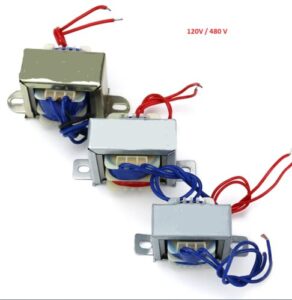
Understanding Isolation Transformers: An In-Depth Overview
Isolation transformers are very important parts of electrical systems. They make sure that people and equipment are safe. In this article, we’ll look at how isolation transformers work and find out why they’re so important in today’s electrical systems.

What are isolation transformers?
Isolation transformers are transformers that are used to isolate electrical circuits from each other. This isolation helps to lower the risk of electrical shock, ground loops, and other dangerous situations that can happen in electrical systems. Isolation transformers are commonly used in medical equipment, measuring instruments, and industrial control systems.
Why are isolation transformers important?
Isolation transformers are important parts of many electrical systems because they make electricity safer by making it less likely that someone will get an electric shock or start a fire. They also help prevent damage to sensitive electronic equipment by reducing the risk of electrical noise and surges.
Isolation transformers are an important part of electrical power distribution systems, and they also make sure that electricity is safe. They are used to isolate different parts of the system, preventing electrical noise and surges from affecting other parts of the system. This is especially important in industries where equipment needs to be protected from electrical noise and surges, like medical equipment, telecommunications, and computing.
How Do Isolation Transformers Work?
Isolation transformers work by using electromagnetic induction to transfer electrical energy from one electrical circuit to another. The primary winding of the transformer is connected to the input voltage, and the secondary output winding is connected to the load. The two windings are physically separate from each other, so there is no direct electrical connection between the input and output.

Types of Isolation Transformers
There are several different types of isolation transformers, including:
- Single phase isolation transformers
- Three-phase isolation transformers
- Auto-transformers
- Line isolation transformers
The type of isolation transformer used will depend on what the electrical system needs and how much electrical isolation is needed.
 Isolation transformer
Isolation transformer
The Advantages of Isolation Transformers
There are several advantages to using isolation transformers in electrical systems, including:
- Improved safety: Isolation transformers help reduce the risk of electrical shock, ground loops, and other dangerous situations.
- Better Signal Integrity: Isolation transformers help to minimize electrical noise and interference, ensuring that signals are transmitted accurately.
- Increased Reliability: Isolation single and three phase transformers are designed to be rugged and reliable, making them ideal for use in harsh industrial environments.
Common Applications of Isolation three phase and single Transformers
Many different applications frequently employ isolation transformers, such as:
- Medical Equipment: Isolation transformers are used in medical equipment to reduce the risk of electrical shock to patients.
- Measuring Instruments: Isolation transformers are used in measuring instruments to ensure that signals are transmitted accurately.
- Industrial Control Systems: Isolation transformers are used in industrial control systems to reduce the risk of electrical shock and to improve signal integrity.
Key Considerations When Selecting Isolation Transformers
There are several key considerations to keep in mind when selecting isolation transformers, including:
- Voltage Ratings: It is important to select an isolation transformer with the appropriate voltage rating to match the voltage of the electrical system.
- Frequency Rating: The frequency rating of an isolation transformer should be chosen to match the frequency of the electrical system.
- Current Rating: The current rating of an isolation transformer should be chosen to match the current requirements of the electrical system.
Conclusion
Isolation transformers are a key part of keeping people and things safe in electrical systems. By using electromagnetic induction to transfer electrical energy from one circuit to another, isolation transformers help reduce the risk of electrical shock, ground loops, and other hazardous conditions. They are commonly used in medical equipment, measuring instruments, and industrial control systems and are designed to be rugged and reliable for use in harsh industrial environments. When choosing isolation transformers, it’s important to think about things like voltage ratings, frequency ratings, and current ratings to make sure the transformer is a good fit for the electrical system.
This article is meant to help electrical engineers, technicians, and other professionals understand how isolation transformers work and how important they are in modern electrical systems by giving a thorough and detailed overview of them.
Faqs on Isolation Transformers
- What is the purpose of an isolation transformer?
The purpose of an isolation transformer is to provide electrical isolation between two or more electrical circuits and protect against electrical hazards.
2. How does an isolation transformer work?
An insulating material, such as a layer of insulation, is used to separate the primary coil and the secondary coil in an isolation transformer. This prevents electrical current from flowing between the coils, providing electrical isolation.
3. What are the benefits of using an isolation transformer?
Using an isolation transformer can make things safer, more reliable, protect against electrical interference, and make things run more smoothly.
4. Where are isolation transformers used?
Isolation transformers are used in a wide range for protection

Leave a Reply